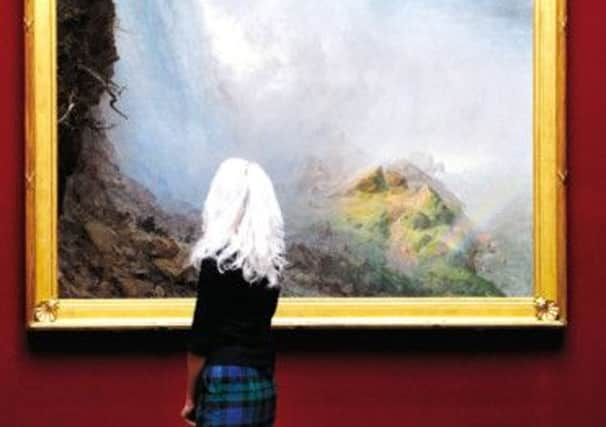Art review: Through American Eyes: Fredric Church And The Landscape Oil Sketch


How to manage that – the border they delineate, the hydro-electricity they are capable of generating and the symbolic beauty they represent – is a thorny and much-visited question.
It was ever thus. When Frederic Church, one of the most successful of the Hudson River School of painters, was casting about for subject matter that was patriotic in its American content and sublime in its appearance, Niagara was unbeatable. He visited three times and made the subject his own.
Advertisement
Hide AdAnd it was power of a financial sort that meant his 1867 painting Niagara Falls From The American Side found itself in the National Gallery of Scotland in Edinburgh.
John Stewart Kennedy was born in Blantyre in 1830. He left school at 13, worked as a shipping clerk in Glasgow and cut his teeth in the iron trade, first in that city and then the US and Canada. Kennedy settled in New York and eventually he became a supplier, speculator and specialist banker for North American railroad expansion. He was opportunistic with “an uncanny sense of timing” born of his extensive network of contacts and his unflustered approach to conflicts of interest. He was, in the words of a recent biography, “the man who found the money”.
Kennedy found the money to buy Church’s painting at the auction of a department store magnate in 1886, and, in a patriotic gesture, promptly popped it on a boat to Edinburgh. The story goes that it was only after doing so that he wired the National Gallery of Scotland to say it was on its way.
Since then the painting has sat as a curious anomaly in our national collection, the most important Church painting in Europe, and one of the biggest canvases he ever made. Its dizzying vertical thrust is a contrast to Church’s most famous Niagara painting, which, with its horizontal emphasis, now hangs in the Corcoran in Washington. Most of the Edinburgh canvas is mist and foam, you can practically hear the thunder. There is little solid ground. High on the left, perched on a perilous viewing platform, are two tiny figures for scale and sensation.
Church’s work, like that of his peers, was an attempt to articulate a landscape that was already disappearing in the changes wrought by people such as Kennedy. Through American Eyes, which brings almost 30 small works from the US to meet their gargantuan cousin, has no other canvases to match the tumult of Niagara. It is instead a show of small oil sketches, and curious pragmatic hybrids including paintings on lithograph and an oil of the falls made by painting over a historic silver albumen photograph.
It sets out Church’s stall by showing his research, his travels and his interests and the politics of his images. The Hudson River School set out to create a native school of painting and it was beset by the issues that this would imply in a nation created by overwhelming its indigenous peoples and reinforced through civil war. Rather than simply escape into the American landscape to become the Turners of New York State, these painters and Church in particular suggested that the landscape itself embodied some kind of American values.
Advertisement
Hide AdIn 1861 Church’s Our Banner In The Sky was the civil war equivalent of Shepard Fairey’s work for the Obama campaign. A blasted and barren tree silhouetted by a fiery daybreak, it can be read as a flagpole, the cloud pattern and the North Star in the sky becoming the stars and stripes. The North would triumph, it was written in the skies. The painting became a popular lithograph. Similarly the following year, the oil and canvas of a sun rising over a placid horizon signifies new beginnings. Church’s son Edwin was born that year; tragically the child did not reach his third birthday.
Church was adventurous. A trip to the coast of Maine provided stormy weather and brooding rock formations. A campfire in the woods or a forest pool provided almost hallucinatory details of nature.
Advertisement
Hide AdLike others he began to think of America in its most expansive New World sense. Further afield from his home territory on the Hudson he hiked up volcanoes in Ecuador and hunted icebergs in Newfoundland and Labrador, producing strange scratchy sketches of the ice, which were later to be worked up into studio extravaganzas.
It is this element that is so sadly missing in this show. As a taster for the artist the exhibition is intriguing. But in a Europe without a strong hold on his painting it feels like we need more. I’m not sure I like the showman Church or the paintings that toured like sensational blockbusters in their day. But I know I’d love to see more of them. And I’d love to know how the massive monstrous wattage of his Edinburgh Niagara sits in that context. That would be a real power play.
Twitter: @moirajeffrey
Through American Eyes: Fredric Church And The Landscape Oil Sketch is at the Scottish National Gallery until 8 September. www.nationalgalleries.org